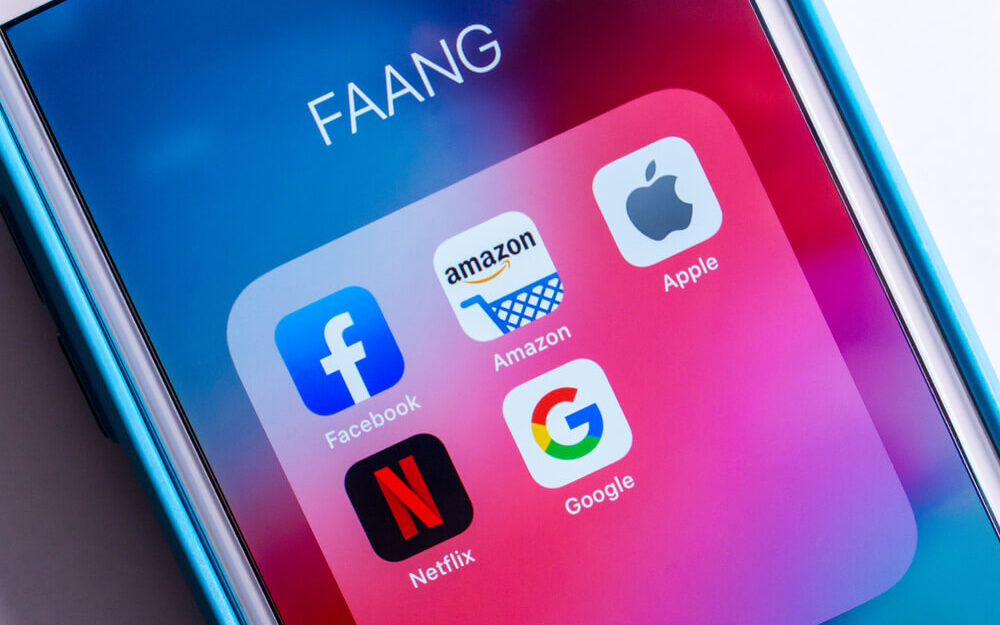Remember the FAANGs?
I try to stay above the hype and focus on the numbers. But even I will admit that “FAANG” had a nice ring to it!
But as an investment theme, it never made a lot of sense. The letters stood for:
- Facebook Inc. (now Meta Platforms Inc.) (Nasdaq: FB).
- Apple Inc. (Nasdaq: AAPL).
- Amazon.com Inc. (Nasdaq: AMZN).
- Netflix Inc. (Nasdaq: NFLX)
- Google (now Alphabet Inc.) (Nasdaq: GOOGL).
And this collection of stocks had two things in common:
- They were all high-momentum growth stocks for a long stretch of the post-2008 period.
- These names could be assembled into a cool acronym that brought to mind wolves, tigers or any number of other intimidating animals.
That’s it.
There is otherwise no real coherence to this “strategy,” if you can call it that. Otherwise, shouldn’t Microsoft Corp. (Nasdaq: MSFT) and Tesla Inc. (Nasdaq: TSLA) make the list?
Both were phenomenal success stories of the past decade, but good luck coming up with an acronym as catchy as FAANG.
I suppose we could throw in Oracle Corp. (NYSE: ORCL) and Salesforce Inc. (NYSE: CRM) to create MMONSTAAA (Microsoft-Meta-Oracle-Netflix-Salesforce-Tesla-Apple-Amazon-Alphabet).
Any takers?
Market Acronyms Like FAANG Aren’t a New Concept
FAANG isn’t the first high-profile market acronym.
You might remember the BRIC or BRICS from the mid-2000s. This was a cocktail of the trendy emerging markets of the day: Brazil, Russia, India, China and later South Africa.
This made less sense than the FAANGs, as these countries had almost nothing in common:
- Brazil was an agricultural power
- Russia was a petrostate that looked dodgy even back then.
- India was a blossoming star in software and services.
- China was the world’s factory.
- South Africa was a mining leader.
This is where it gets ridiculous.
The BRICS acronym was coined by an analyst at Goldman Sachs in 2001. But the phrase became so popular that it grew into something resembling an organization. The foreign ministers of Brazil, Russia, India and China began meeting informally in 2006 and then started formal annual diplomatic meetings in 2009.
The BRICS story ended badly. Commodities slumped into a long bear market, dragging down Russian, Brazilian and South African stocks. Of the group, only Indian stocks are anywhere close to new highs, at least in dollar terms.
Are we seeing a similar ending to the FAANG story?
FAANG’s Fate
Yes and no.
The acronym is dead, and the FAANGs as a “theme” are dead — as they should be. This was always an investment story based more on marketing appeal than on any fundamental mega trend.
We’re also seeing weakness in most of the names. And most rate pretty poorly in my Stock Power Ratings system. Meta and Amazon rate an uninspiring 46 and 44, respectively — and Netflix rates a “Bearish” 40.
Apple and Alphabet are a different story, however. Apple rates a “Bullish” 76, and Alphabet rates even better at 78.
So while the FAANGs story might be dead, there are still some potential gems here.
But let’s also consider the bigger picture.
Why Acronyms Aren’t a Trading Strategy
A cool acronym is not a substitute for an investing system. It’s lazy thinking and it’s not likely to deliver the returns you want over time.
An acronym won’t tell you when a stock is exhibiting bullish momentum or trading at an attractive valuation. And it certainly won’t give you guidance on when to take a profit or to cut a loss.
But that’s where Green Zone Fortunes comes in.
We identify durable mega trends and then find the best stocks to gain exposure to those trends using my Stock Power Ratings system, which objectively rates stocks based on three fundamental and three technical factors.
And while FAANG is a silly acronym that shouldn’t be at the core of an investing strategy, momentum and growth are two of those six factors we use when determining our next highest-conviction stock recommendation.
As far as durable mega trends go … renewable energy is about as sturdy as it gets.
Countries around the world are shifting to greener energy production. It’s simple economics as the price of renewable energy plunges.
But one company developing what I call “Infinite Energy” tech is working to disrupt this multitrillion-dollar global energy industry using its revolutionary artificial intelligence (AI) tech.
How?
By accessing the largest untapped energy source in the world.
Click here to watch my “Infinite Energy” presentation, and join us in Green Zone Fortunes to find out how we’re following this mega trend (and more).
To good profits,

Adam O’Dell
Chief Investment Strategist




